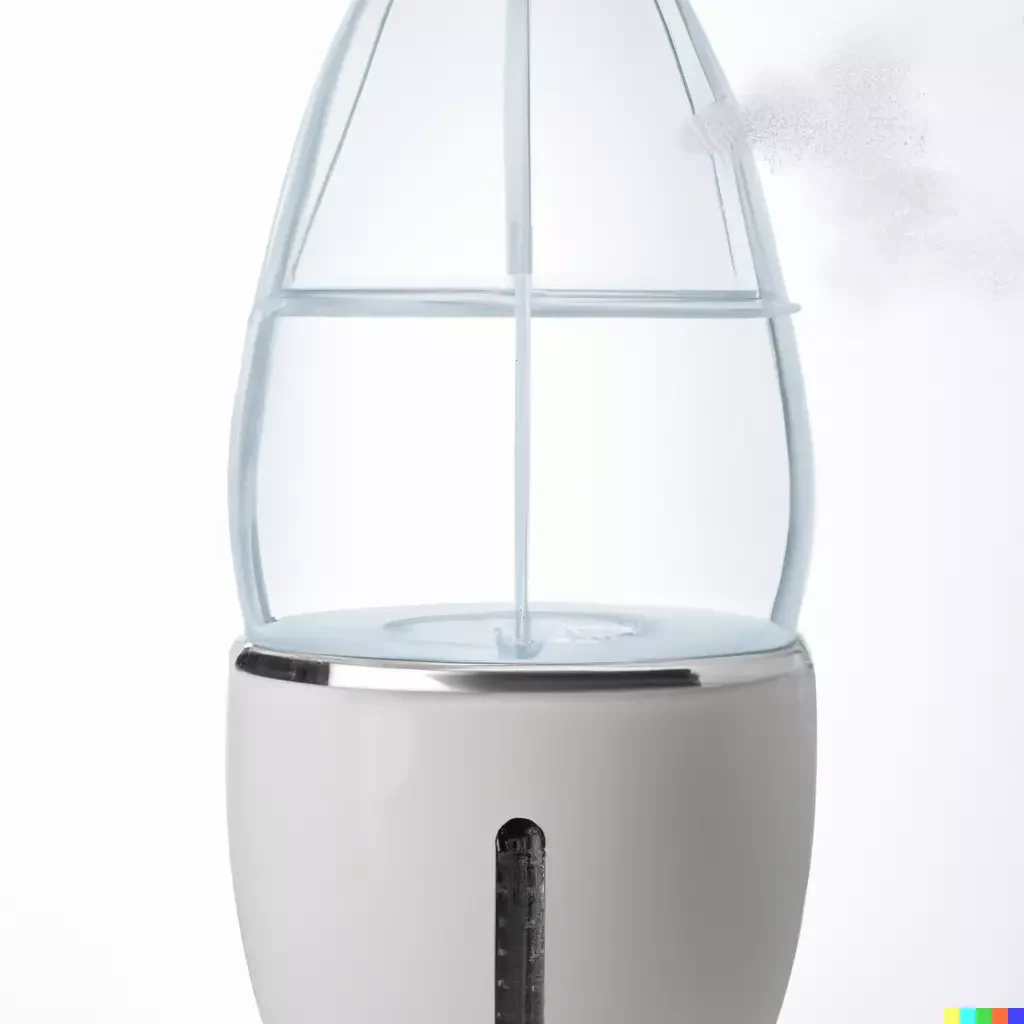To set the humidifier for summer, adjust it to a lower level to maintain comfortable humidity. The recommended level is around 40-50% humidity for the summer season.
Maintaining the right level of humidity in your home or office during the summer is crucial for your health and comfort. Proper humidifier settings can help prevent dryness in the air, alleviate allergy symptoms, and improve overall air quality. It’s important to find the right balance, as excessive humidity can also lead to mold and mildew growth.
By adjusting your humidifier settings for the summer, you can create a more pleasant and healthy indoor environment for yourself and your family. This article will provide tips and guidance on the best humidifier settings for the summer season.
Understanding The Impact Of Summer On Indoor Humidity
When the summer heat rolls in, it’s not just the outdoor temperature that we need to worry about. The humidity levels inside our homes can also fluctuate, impacting our comfort, health, and even the condition of our furniture and belongings. Understanding the impact of summer on indoor humidity is crucial for ensuring a healthy and pleasant living environment.
Link Between High Summer Temperatures And Low Indoor Humidity
As temperatures rise during the summer months, the air’s ability to hold moisture increases. This often leads to a decrease in indoor humidity levels, especially in air-conditioned spaces. The cooler air from the AC unit can hold less moisture, causing the relative humidity indoors to drop. This link between high summer temperatures and low indoor humidity can result in dry, uncomfortable air that can affect our well-being and the quality of our indoor environment.
Effects Of Low And High Humidity On Health And Home
- Dry air can lead to respiratory issues, dry skin, and irritated eyes.
- Wood furniture and flooring may shrink and crack due to lack of moisture.
- Static electricity can become prevalent, causing discomfort and potential damage to electronic devices.
- Excessive moisture can create a breeding ground for mold and mildew, posing health risks.
- Condensation on windows and walls can lead to structural damage and mold growth.
- Increased humidity can make the air feel warmer, leading to higher energy costs for cooling.
Optimizing Humidifier Settings For Summer
In summer, optimizing humidifier settings is crucial for maintaining a comfortable and healthy indoor environment. With the rise in temperatures, balancing the humidity levels in your home becomes essential to prevent issues such as dry air, allergies, and respiratory discomfort. Understanding the recommended humidity levels, monitoring them effectively, and adjusting your humidifier settings are key aspects of ensuring an optimal indoor atmosphere during the summer season.
Importance Of Monitoring Indoor Humidity Levels In Summer
During the summer, excessive humidity can lead to mold growth and exacerbate respiratory conditions. On the other hand, overly dry air can cause skin irritation and discomfort. Therefore, regularly monitoring indoor humidity levels is vital to strike the right balance and create a healthy living space for you and your family.
Factors To Consider When Setting Humidifier For Summer
When adjusting your humidifier for the summer months, it’s essential to consider several factors to ensure optimal performance. A few key considerations are indoor humidity levels, the type of humidifier being used, and the size of the space being humidified. Equally important is the need to balance humidity without overworking the humidifier, especially during the hotter months.
Types Of Humidifiers Ideal For Summer And Their Settings
In the summer, evaporative humidifiers and cool mist humidifiers are popular choices due to their ability to add moisture to the air without increasing the temperature. Evaporative humidifiers can be set to higher humidity levels, around 60% to 70%, while cool mist humidifiers are suitable at a slightly lower range of 50% to 60%. Ultrasonic humidifiers are also preferred for summer as they produce cool mist and use less energy. Their recommended setting falls between 50% to 60%, depending on the specific humidity needs of the space.
Balancing Humidity Without Overworking The Humidifier
To prevent overworking your humidifier during the summer, it’s crucial to maintain a proper balance of humidity without pushing the device beyond its capabilities. Regularly monitor the indoor humidity levels using a hygrometer, and adjust the humidifier settings accordingly to maintain a comfortable and healthy environment. In addition, ensuring adequate ventilation and limiting the use of the humidifier during periods of high outdoor humidity can help prevent overworking the device.

Credit: bearshomesolutions.com
Tips For Maintaining Balanced Indoor Moisture
During the summer months, maintaining balanced indoor moisture levels is essential for a comfortable and healthy living environment. Excess humidity can lead to mold and mildew growth, while low humidity can cause discomfort and dryness. Utilizing a humidifier can help regulate indoor moisture, but it’s important to adjust its settings and complement its function with natural methods. Here are some tips for maintaining balanced indoor moisture through the summer.
Using Natural Methods To Control Indoor Humidity In Summer
Natural ventilation – Open windows and doors during cooler evenings to allow fresh air to circulate and reduce humidity levels.
Use of fans – Ceiling or oscillating fans can help improve air circulation and prevent stagnant, humid air from stagnating.
Indoor plants – Certain plants, such as ferns and peace lilies, can absorb excess moisture from the air, helping to maintain balanced humidity levels.
Complementary Practices To Support The Function Of The Humidifier
Regular cleaning – Clean the humidifier according to the manufacturer’s instructions to prevent mold and bacteria growth.
Use distilled water – Using distilled water instead of tap water can help reduce mineral buildup inside the humidifier and maintain its effectiveness.
Adjusting placement – Position the humidifier in a central location to ensure even distribution of moisture throughout the space.
Monitoring And Adjusting Humidifier Settings Throughout The Summer
Check humidity levels – Use a hygrometer to monitor indoor humidity levels and adjust the humidifier settings accordingly.
Seasonal adjustments – As outdoor humidity levels fluctuate, make corresponding adjustments to the humidifier settings to maintain optimal indoor moisture.
Best Practices For Ensuring Optimal Impact On Indoor Air Quality
Properly setting the humidifier during summer is crucial for maintaining good indoor air quality. The right humidity levels can prevent the growth of mold and mildew while keeping your skin and respiratory system healthy. To achieve optimal impact on indoor air quality, consider the following best practices.
Importance Of Regular Maintenance And Cleaning Of Humidifiers
Regular maintenance and cleaning of humidifiers are essential to ensure they function effectively. Cleaning the water tank, replacing filters, and disinfecting the unit help prevent mold and bacteria growth, which can negatively impact indoor air quality. Additionally, using distilled water instead of tap water can minimize mineral buildup, resulting in cleaner mist and healthier air.
Additional Ways To Improve Indoor Air Quality In Summer
In addition to using a humidifier, there are other effective methods to further enhance indoor air quality during summer. Ventilating your home by opening windows, using air purifiers, and investing in houseplants can help reduce indoor pollutants and allergens, contributing to a healthier living environment. Furthermore, practicing regular cleaning and dusting can minimize the presence of dust mites and other allergens, thus improving air quality.
Conclusion
In the summer, setting the right humidity level in your home is essential for comfort and health. By following the recommended settings for your humidifier, you can ensure optimal indoor air quality. With the proper maintenance and understanding of humidity levels, you can create a refreshing and comfortable environment in your home during the summer months.
Frequently Asked Questions For Humidifier Setting For Summer
What Is The Ideal Humidity Level For Summer?
The ideal humidity level for summer is between 30-50% to maintain comfort and prevent mold growth.
How Often Should I Clean My Humidifier In Summer?
It’s recommended to clean your humidifier every 1-2 weeks to prevent mold and bacteria buildup.
Can I Use Tap Water In My Humidifier During Summer?
Using distilled water is best to avoid mineral buildup, but tap water can be used if it’s not too hard.
Do I Need A Humidifier In Summer?
Yes, a humidifier can help maintain comfortable humidity levels indoors, especially in air-conditioned spaces.
What Is The Best Setting For A Humidifier In Summer?
Set your humidifier to a lower level, around 40%, to maintain comfort without over-humidifying the air.





